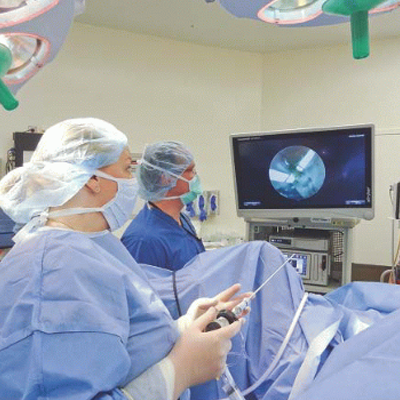During a medical hysteroscopy, a pathological state is observed and surgical hysteroscopy is used to correct it. If an adverse diagnosis is discovered during the experimental hysteroscopy, a second surgery may be avoided when doing a hysteroscopy at the same period.
When does hysteroscopy come into play?
Hysteroscopy can be used by your doctor to treat the following uterine conditions:
Septums:Hysteroscopy will help decide whether you have a uterine septum, a uterine malformation that occurs at birth.
Uterine adhesions:also known as Asherman’s Syndrome, are scar tissue bands that may develop in the uterus, causing variations in menstrual flow and infertility.
Polyps and fibroids: These non-cancerous growths in the uterus are removed using hysteroscopy.

What are the advantages of a hysteroscopy procedure?
- A shorter time in the hospital.
- Recovery time is reduced.
- After treatment, there is a reduction in the amount of pain relief needed.
- Hysterectomy is avoided.
- Avoidance to “open” abdominal surgery is a possibility.
Is hysteroscopy a risky procedure?
Hysteroscopy is a reasonably secure treatment. However, complications are likely for any kind of operation:
- Anesthesia has several risks.
- Infection is a term that is used to describe a
- There is a lot of bleeding.
- Cervix, uterus, bowel, or urinary injury
- Scarring inside the uterus.
- The body’s reaction to the drug that was used to enlarge the uterus.
Hysteroscopy is called mild surgery and does not normally necessitate an overnight hospital stay. An overnight stay could be necessary in some cases, such as if your doctor is worried about your response to anesthesia.
If you have any queries about Hysteroscopy, consult the Best Gynecologist in Greater Noida, Dr.Sonali Gupta.
